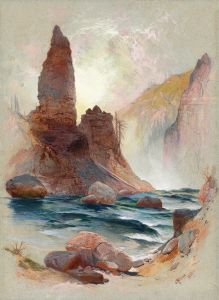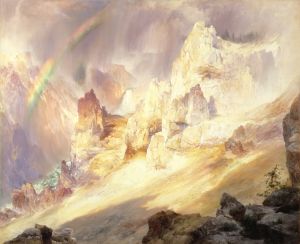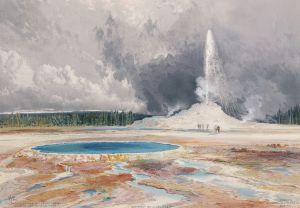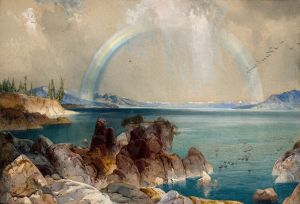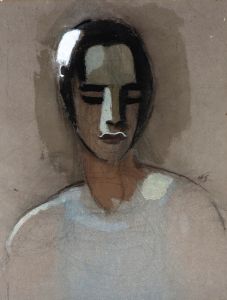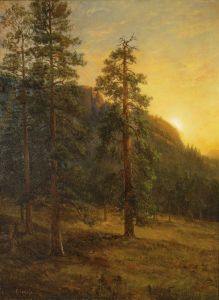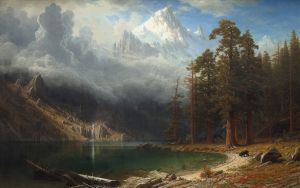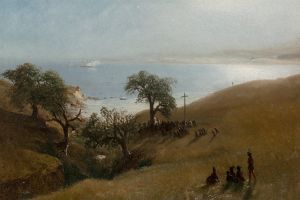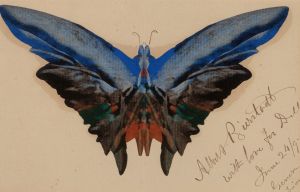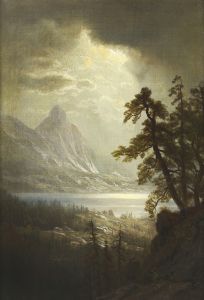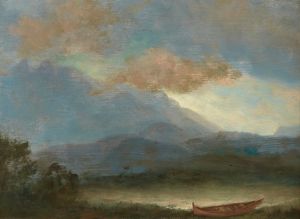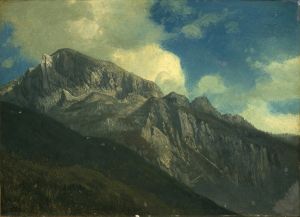
Bridal Veil Falls, Yosemite Valley, California
A hand-painted replica of Albert Bierstadt’s masterpiece Bridal Veil Falls, Yosemite Valley, California, meticulously crafted by professional artists to capture the true essence of the original. Each piece is created with museum-quality canvas and rare mineral pigments, carefully painted by experienced artists with delicate brushstrokes and rich, layered colors to perfectly recreate the texture of the original artwork. Unlike machine-printed reproductions, this hand-painted version brings the painting to life, infused with the artist’s emotions and skill in every stroke. Whether for personal collection or home decoration, it instantly elevates the artistic atmosphere of any space.
Albert Bierstadt's painting Bridal Veil Falls, Yosemite Valley, California is a notable work by the 19th-century German-American artist, who is renowned for his large-scale landscapes of the American West. Bierstadt, a key figure of the Hudson River School and the Rocky Mountain School, was celebrated for his dramatic and romanticized depictions of natural scenery, often emphasizing the grandeur and sublime qualities of the wilderness.
This particular painting captures Bridalveil Fall, one of Yosemite Valley's most iconic waterfalls, located in what is now Yosemite National Park in California. Bridalveil Fall is known for its striking height of 620 feet (189 meters) and its ethereal appearance, particularly when wind causes the water to spray and shift, resembling a bridal veil. Bierstadt's rendering of the scene reflects his characteristic use of light and atmosphere to evoke a sense of awe and reverence for the natural world.
Bierstadt first visited Yosemite Valley in the early 1860s, during a period when the region was gaining attention for its breathtaking landscapes. His travels to Yosemite and other parts of the American West were part of a broader movement of exploration and artistic documentation of the region, which was relatively unknown to many Americans at the time. Bierstadt's works played a significant role in introducing the beauty of the West to audiences in the eastern United States and Europe, contributing to the growing interest in conservation and the eventual establishment of national parks.
In Bridal Veil Falls, Yosemite Valley, California, Bierstadt employs his signature techniques, including meticulous attention to detail, dramatic contrasts of light and shadow, and a luminous quality that enhances the scene's majesty. The painting likely reflects Bierstadt's ability to blend realistic elements with idealized compositions, a hallmark of his style. While the exact date of this painting is not definitively documented, it is consistent with Bierstadt's body of work from the 1860s and 1870s, a period during which he produced many of his Yosemite-inspired pieces.
Bierstadt's Yosemite paintings, including this depiction of Bridalveil Fall, were instrumental in shaping public perceptions of the American West as a place of unparalleled natural beauty. His works not only garnered critical acclaim but also helped to inspire early conservation efforts, such as the Yosemite Grant of 1864, which set aside Yosemite Valley and the Mariposa Grove of Giant Sequoias for public use and preservation.
Today, Bridal Veil Falls, Yosemite Valley, California is recognized as an example of Bierstadt's ability to capture the majesty of the American landscape, reflecting both his artistic skill and his role in the cultural history of the United States.





